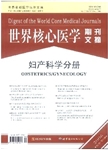Denosumab治疗绝经后妇女低骨密度
Denosumab in postmenopausal women with low bone mineral density作者机构:Oregon Osteoporosis Center 5050 NE Hoyt St Portland OR 97213 United States Dr.
出 版 物:《世界核心医学期刊文摘(妇产科学分册)》 (Core Journal in Obstetrics/Gynecology)
年 卷 期:2006年第2卷第8期
页 面:1-2页
学科分类:1002[医学-临床医学] 100211[医学-妇产科学] 10[医学]
主 题:骨密度 Denosumab 膦酸盐 破骨细胞 RANKL 骨代谢 骨质疏松 人单克隆抗体 安慰剂 活
摘 要:Background: Receptor activator of nuclear factor- κ B ligand (RANKL) is essential for osteoclast differentiation, activation, and survival. The fully human monoclonal antibody denosumab (formerly known as AMG 162)- binds RANKL with high affinity and specificity and inhibits RANKL action. Methods: The efficacy and safety of subcutaneously administered denosumab were evaluated over a period of 12 months in 412 postmenopausal women with low bone mineral density (T score of- 1.8 to - 4.0 at the lumbar spine or- 1.8 to- 3.5 at the proximal femur). Subjects were randomly assigned to receive denosumab either every three months (at a dose of 6, 14, or 30 mg) or every six months (at a dose of 14, 60, 100, or 210 mg), open- label oral alendronate once weekly (at a dose of 70 mg), or placebo. The primary end point was the percentage change from baseline in bone mineral density at the lumbar spine at 12 months. Changes in bone turnover were assessed by measurement of serum and urine telopeptides and bone-specific alkaline phosphatase. Results: Denosumab treatment for 12 months resulted in an increase in bone mineral density at the lumbar spine of 3.0 to 6.7 percent (as compared with an increase of 4.6 percent with alendronate and a loss of 0.8 percent with placebo), at the total hip of 1.9 to 3.6 percent (as compared with an increase of 2.1 percent with alendronate and a loss of 0.6 percent with placebo), and at the distal third of the radius of 0.4 to 1.3 percent (as compared with decreases of 0.5 percent with alendronate and 2.0 percent with placebo). Near-maximal reductions in mean levels of serum C- telopeptide from baseline were evident three days after the administration of denosumab. The duration of the suppression of bone turnover appeared to be dose-dependent. Conclusions: In postmenopausal women with low bone mass, denosumab increased bone mineral density and decreased bone resorption. These preliminary data suggest that denosumab might be an effective treatment for o



